Expect Three Days of Contingency Operations as Regolith Leaks from OSIRIS-REx
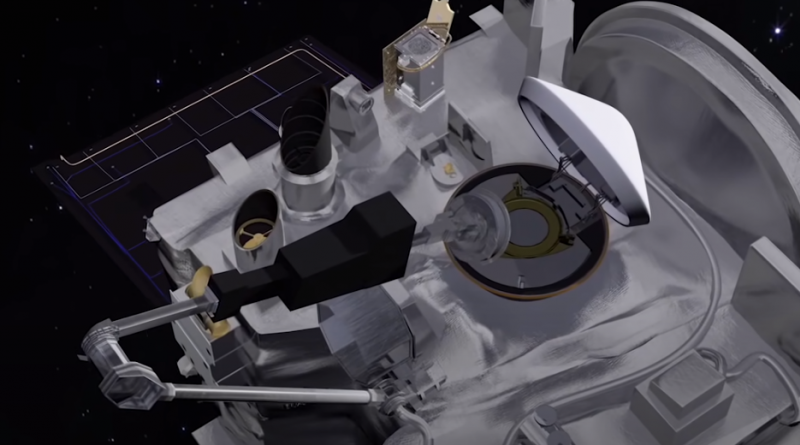
Valuable scientific material is leaking out of the TAGSAM collection head as the OSIRIS-REx spacecraft flies away from asteroid Bennu. NASA is conducting contingency operations and expediting the stow maneuver to minimize further material loss.
On Friday, October 23 2020, Thomas Zurbuchen and Dante Lauretta briefed the media on the situation. Thomas Zurbuchen is NASA’s associate administrator for science at the agency’s headquarters in Washington. Dante Lauretta is OSIRIS-REx principal investigator at the University of Arizona in Tucson.
After a touch-and-go maneuver last week to collect regolith from the surface of the asteroid, the collection arm was articulated so a camera could image the head. Several signs point to a nearly full collection head. The mission goal was a minimum of 60 grams of regolith with a maximum of 2000 grams. Based on light being blocked through the head, it appears that 90% of the head is full. However, with the action of moving the arm, the cameras detected five to ten grams of thin flakey material was falling out of the collection head.
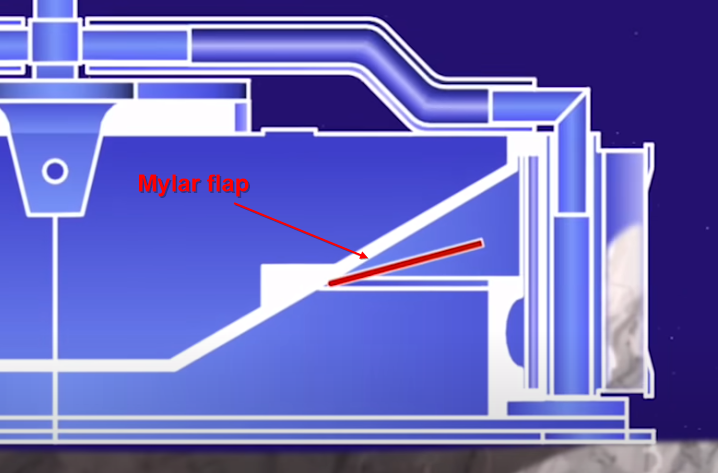
Dante Lauretta: "We are a victim of our own success. Some of the largest particles left the mylar flap open. The entire system is in microgravity so it is behaving like a fluid. We were moving the arm around to get these images, so that is imparting random motion. Particles are diffusing out. They aren't moving fast. We've measured their rates at just under 1 cm per second."
Lauretta: "We can see 3 cm by 2 cm particles that are jammed in the opening of the TAGSAM that are keeping the mylar flap open. We've identified five particles that are in that configuration. The largest is 3 cm and the smallest is about 1 cm. It is clear that there is a large population of particles outside the head. I was immediately concerned because this is loss of sample and sample mass."
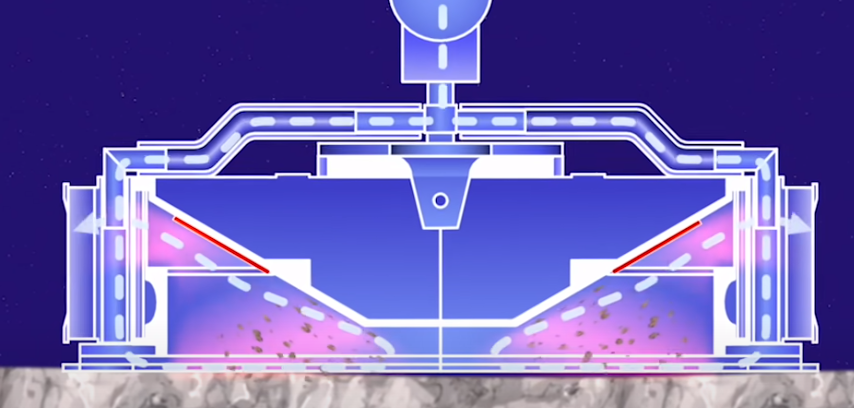
"In the photographs, we can see that it is a large rock that is pushed and wedged between the outer rim of the TAGSAM and the Mylar flap and that is one of the areas where that flap is being held open. There is no way to articulate that flap. It is a passive component. Whatever configuration it is in, that is what we have to accept. We are not sure of the force holding the wedging rock in there right now. My guess, it has to be fairly strong because it is right at the size limit that could pass through there. So it got jammed in. We do see in other image analysis, that flap is clear. Through careful assessment, we can see stuff on the other side of it. So we know behind that flap there is a bunch of asteroid regolith as well. These big particles were probably coming in late, hitting that flap. The flap had so much material behind it that it could not push any farther back. We did not see this in our test campaigns. We tested large rocks. We tested a buried head. The thing that we did not test that we saw during the TAG event was this really deep penetration. The TAGSAM itself went possibly as deep as 48 centimeters into the asteroid surface. So there was a lot of force that was provided in addition to the gas that provided more mobilization of materials. I really think that we are looking at substantial mass. The last stuff that was getting in there, there was simply no room to accommodate it. As a result, material is leaking out through the small gaps that were created."
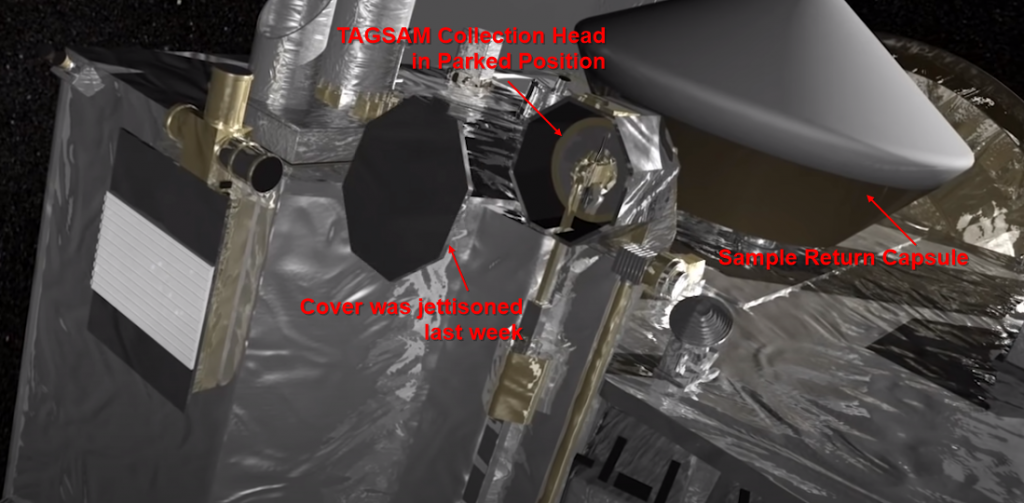
The team has stowed the collection head in a safer position on the side of the spacecraft. Lauretta: "The images released on Friday required articulating the TAGSAM arm into a very specific position. We are not comfortable maintaining that position over the long period of time. We prefer the TAGSAM head to be in the parked position. This is similar to it's launch configuration. Tucked away on the side of the spacecraft. It is in shadow so it stays nice and cool. We have to place it in the Sun to get these kinds of images. We had a very deliberate timeline to minimize exposure to the Sun to prevent the head from getting too warm and possibly compromising the sample. We believe the safest place for the TAGSAM to be parked is at the side of the spacecraft but we don't have a camera system that allows us to monitor that. We will be using both the SAMCAM and the StowCam to monitor the TAGSAM head status throughout the entire stow sequence. But it is not currently in the field of view of either one of those imagers."
Lauretta: "We observed 5-10 grams of material escaping. We think this is due to moving the collection head to get the photos. We don't think it is a continuing steady state. We've used the star trackers on the spacecraft to measure points of light against a known star field. When we moved the head to get the photos, the signal increased. But since we have parked the sample collection head on in its stowed position on the side of the spacecraft, that starfield signal has gone down indicating that the loss of material has slowed. "
The team cancelled a braking maneuver scheduled for Friday October 23 2020 and a Spin operation scheduled for Saturday October 24 2020, thinking that either operation would cause more loss of material. Lauretta: "We are concerned that the spin maneuver on Saturday would impart more random motion and risk more loss of material. We've waved that off. We had a braking maneuver scheduled to stop the motion relative to Bennu. We aren't going to execute that braking maneuver because that would also impart forces on the sample head. I've directed the team to put as minimal activity on the spacecraft as necessary to minimize the loss of material."
Without the spin operation, they won't know exactly how much material they've collected until the sample returns to Earth in 2023. Lauretta: "We are going to have to wait until it gets home to figure out precisely how much material we have. As you can imagine, that is hard. We were looking forward to a sample mass measurement and the certainty that it gave us in planning out the sample analysis activities. The good news is that we see a lot of material. We are in the positive situation of having a lot more than the 60 grams that we were required here."
The three-day stow procedure will begin on Tuesday October 27, 2020 instead of waiting until November. The team is evaluating the stow sequence to see where they can change the order of operations. Lauretta: "The team is to go through the existing stow sequence, acknowledging that we are in a contingency situation that we didn't expect and modifying the stow sequence with all of those things under consideration to minimize further mass loss. We are going down the path that we are expediting stow as quickly as possible. The one area that we want to team to spend a little bit of time is the procedure that is developed and the commands that are on the spacecraft to stow did not consider that material might be coming out of the TAGSAM head. We want them to go through that procedure. It is a very tactical operation with a lot of ground in the loop. There is decision making. We move the TAGSAM head. We take images. We downlink the images. We evaluate the position of everything. Then we make the decision to continue. Or if we see something we don't like to back up and rethink our approach. We want the team to go through the current evaluation program and say 'Okay, what do you do differently now that we think that particles might be falling out of TAGSAM?'. Making sure that they don't cause mechanical interferences."
NASA is working with the Deep Space Network team to secure 24x7 coverage of the three-day stowage sequence. Thomas Zurbuchen: "I talked to the leaders of the Deep Space Network to prioritize the contingency operations so we can do this maneuver with all the attention we can give it. We are making sure that other missions that these antennas are supporting, that we are doing a plan from a portfolio perspective that we achieve two things: we stow as fast as we can, and second we do so with minimum negative impact to the portfolio of missions using the Deep Space Network."
Some camera calibration is scheduled for Monday October 26, 2020. Lauretta: "One of the things that we have to do before stow is we have to check out the Stow Cam. This is an imaging system on the spacecraft that looks at the Sample Return Capsule. We have released images in the past of the sample return capsule closed. We have seen that there is dust floating on our other optical elements. We do need to know the state of that camera. The dust isn't a problem. It changes the exposure times. Think about when you are wearing glasses and the glasses are pretty dirty. You don't really notice it until you take the glasses away and look and clean them. Not as much light is passing through those lenses. So you need to integrate the camera time longer for that activity. That is one thing we plan on doing on Monday - checking out that camera. We are hoping to begin the stow activities on Tuesday. But we are still going through reviews internally, evaluating the sequence and understanding changes to that sequence that deal with the environment that we find ourselves in - actively shedding particles from the TAGSAM head and any changes or additional verification steps we want to add."
Stow will likely take three days. Lauretta: "Stow will be very slow and deliberate and play out over several days of activity. The Stow sequence will be longer in time than the imaging. We are expecting three days of activity versus a few hours of activity for the imaging campaign. I expect a similar amount of mass loss and I don't see a way to stop that. I expect we are losing grams to tens of grams during stow.”
Zurbuchen: "We can't change the speed of light. It will take 18 minutes for a signal to travel from the spacecraft to Earth and other 18 minutes for the command to return from Earth to OSIRIS-REx."
The team has one chance to stow. Lauretta: "Once you place the TAGSAM head in the capture ring, you have to fire a tube cutter which cuts the plumbing from the TAGSAM gas bottles down to the head and then a separation bolt. So that is a one-way ticket. Then we move the arm away and the head remains inside the capture ring mechanism. Then we will pull the SRC down. There are several latches. Only one latch is required for Earth entry. It is very strong. If there is an obstruction, we are confident that it can overcome that."
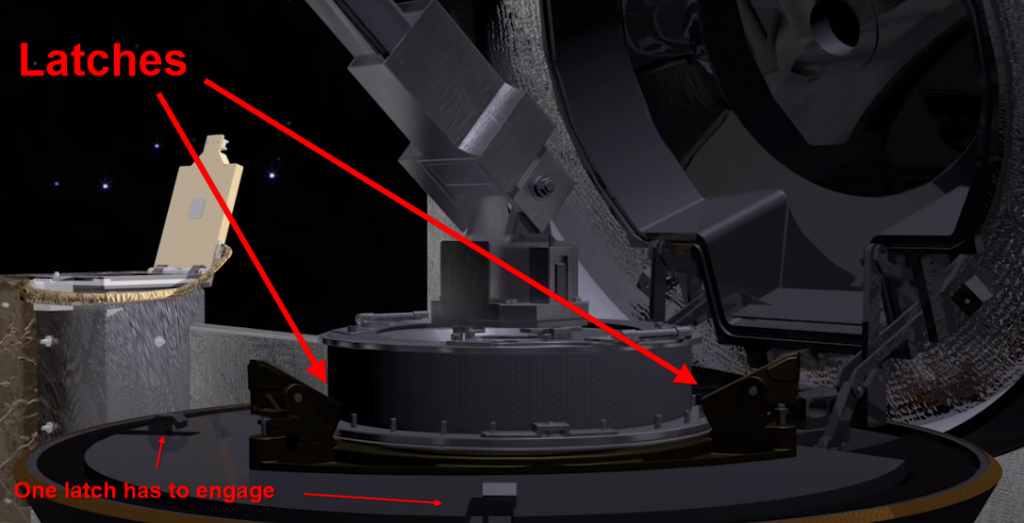
Lauretta: "We can't leave the asteroid until March of 2021. But once the TAGSAM is safely stowed in the return capsule and the return capsule is closed, it is protected and there will be no more mass loss. Material may still leak out of the head but it will just be inside the science canister. We are prepared to clean all that back up once we are back on Earth."
Zurbuchen: "There is so much regolith in the collection head that the mylar diaphragm that was supposed to keep the sample in is stuck open and we observed some of the sample pieces escaping into space. Therefore, now, time is of the essence. We've made a decision to forego the sample mass measurements. Asked the team to prepare immediately to do the analysis to see if we are ready to stow. The spacecraft team and the Deep Space Network team are both working contingency operations in parallel to see that we are ready for that stow decision perhaps as early as Monday October 26, 2020."
Images in this article were sourced and annotated from a 2018 video produced by NASA's Goddard Spaceflight Center, presented in its entirety below.

Stunning, full color photo book covering every east coast launch spanning 2014-2015, including the first-ever powered landing of a SpaceX Falcon 9 rocket.
More Info



